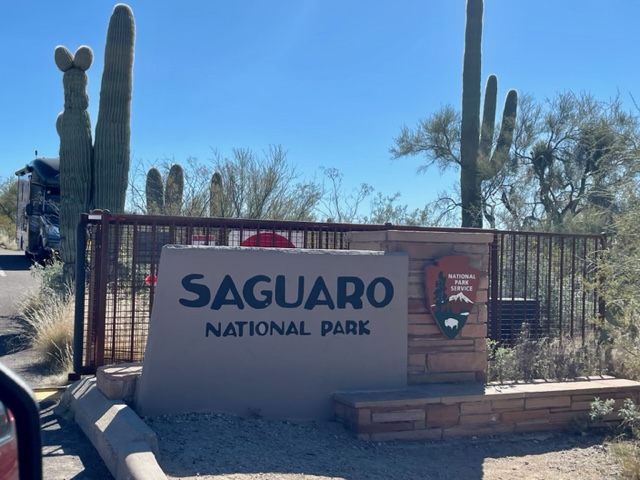
An icon of the American West, the Sagauro (sah-WAH-row) are the giants among cacti found only in the Sonoran Desert, limited in the US primarily to southern Arizona. Who could resist getting up close and personal with a few of these spectacular plants? We started our Saguaro National Park experience at the Rincon Mountain Visitor Center just east of Tucson, Arizona with a delightful conversation with a park volunteer who helped us plan our visit. Luckily we were able to view “A Delicate Balance” there. It’s also online so you can see it by clicking the green button above.) Then with a little more of a sense of what we were looking at we headed out on the park loop road. It’s a one way 7.8 mile loop with lots of delightful stops and interpretive signs along the way. We were blessed with incredibly beautiful weather so we really enjoyed hopping out of the car frequently, eating our picnic lunch at the Cactus Forest Overlook, walking the Desert Ecology Nature Trail, and doing a little poking around at the Javelina Rocks. We were amazed at the relative lushness of the Sonoran Desert with it’s warmer and wetter winters and monsoons in the summer it has much more biological diversity that other North American deserts. Between the interpretive signs and the Seek app on the iPhone we were delighting in being able to identify not only Saguaro cacti but to distinguish them from Barrel Cacti, notice different varieties of Cholla Cacti, identify Desert Mistletoe, Mesquite, Palo Verde, Brittle Bush, to name a few. We also learned that January is the busiest month here. Not only is the weather pleasant but folks come to Tucson in from all over the world for a variety of gem and mineral shows from late January through mid-March and many of them also visit Saguaro National Park while they are here to take the opportunity as we did to learn about the amazingly long life cycle of these majestic cacti.
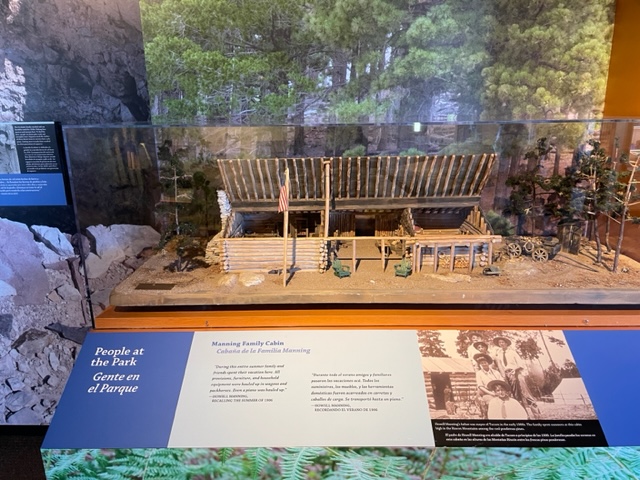
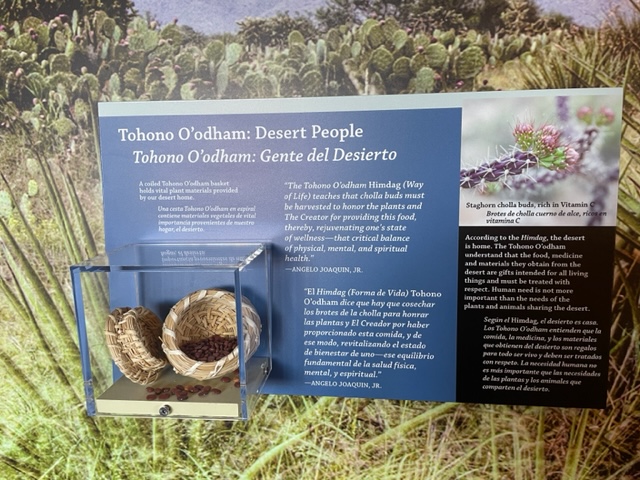
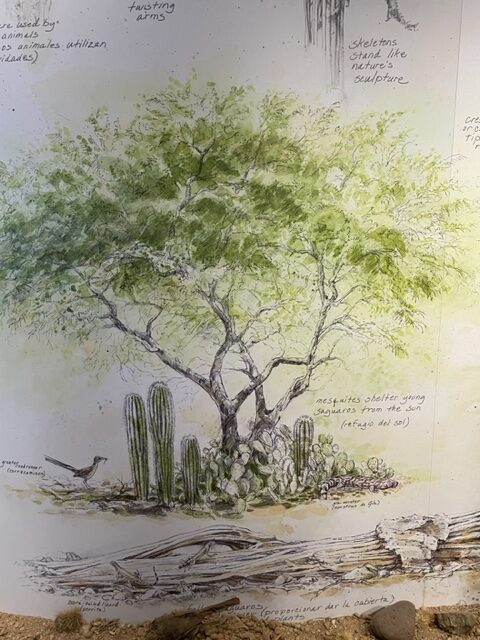
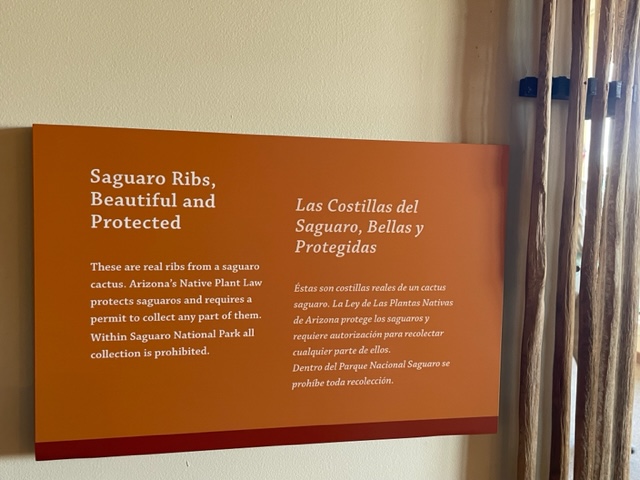
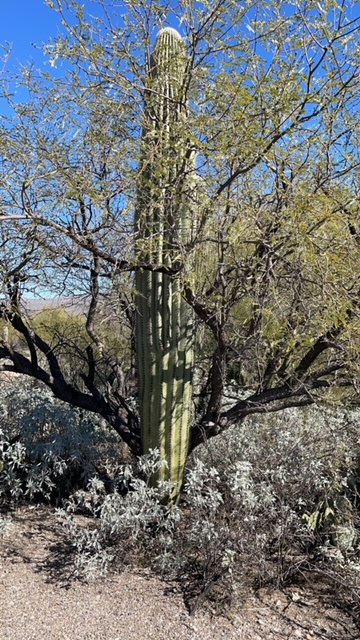
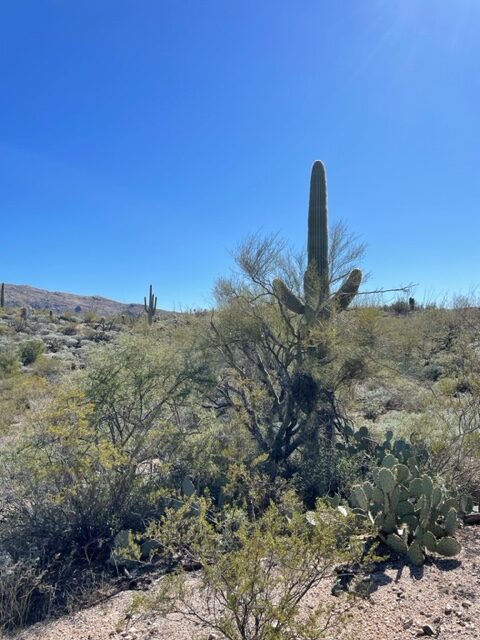
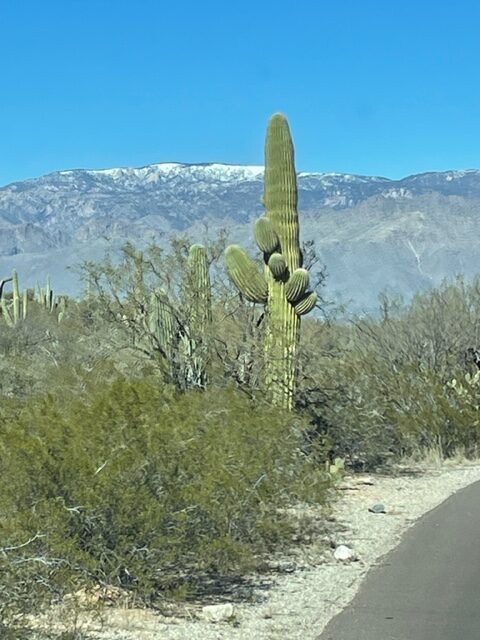
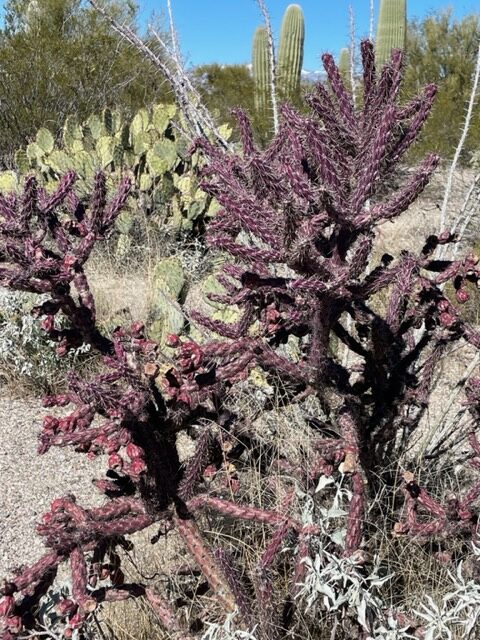
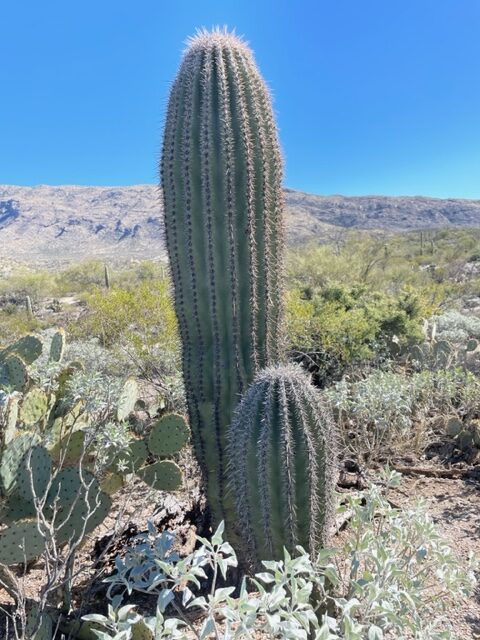
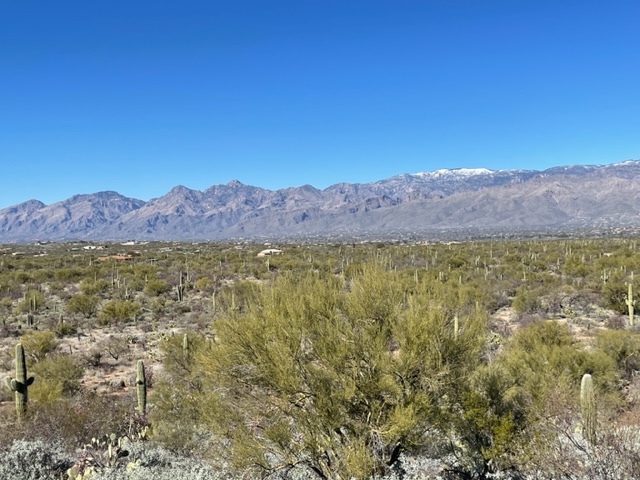
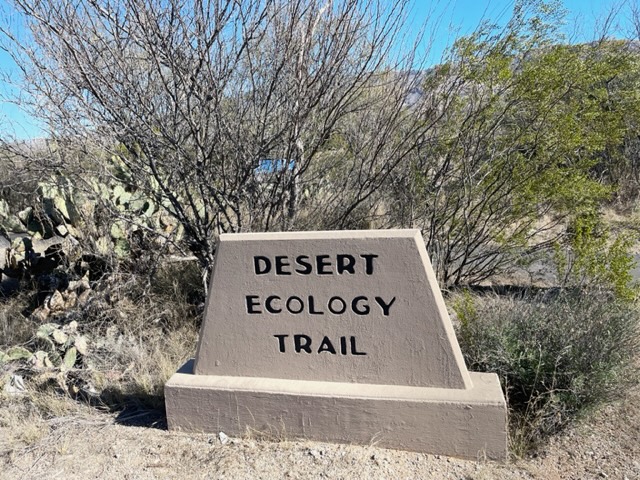
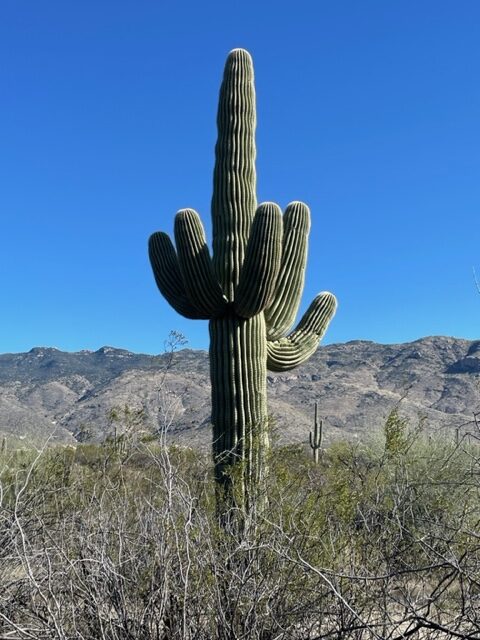
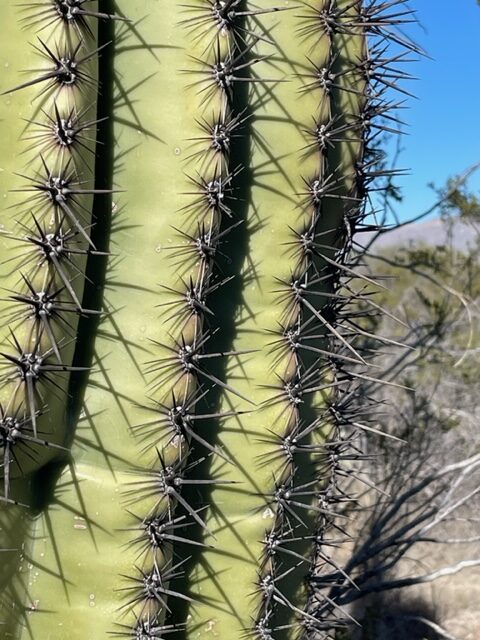
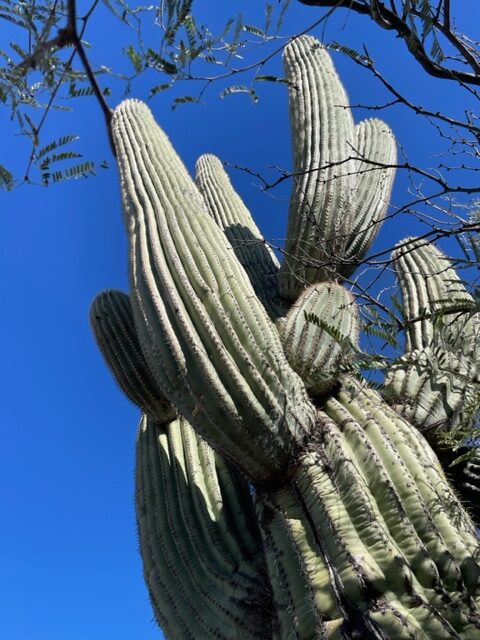
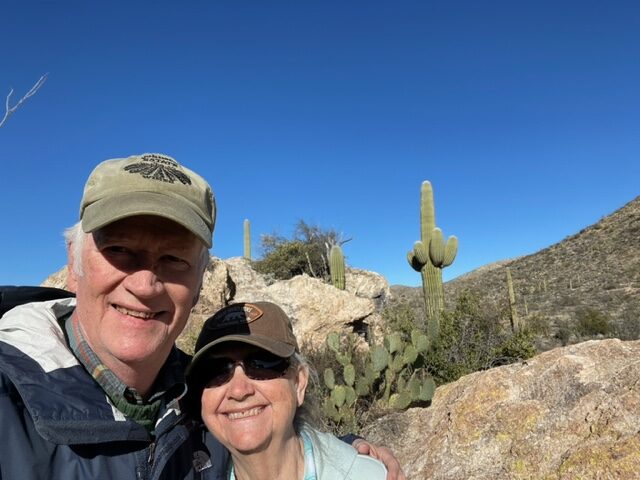









I’d leave the up close to you travelers! But thanks for sharing.
Love to you
Jackie Mallory